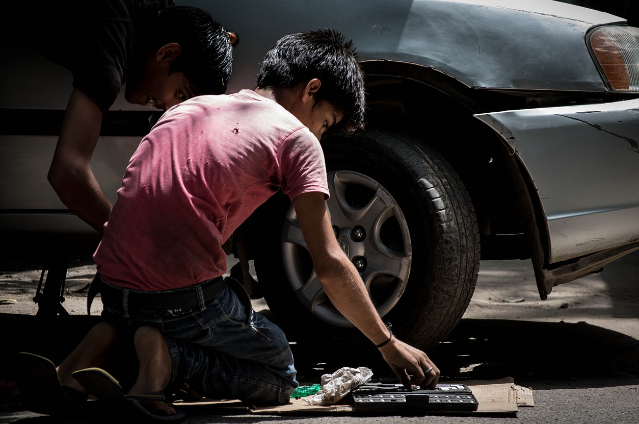
Image by Suvajit Roy from Pixabay
Child labour remains one of the most pressing issues of our time, a stark reminder of global inequalities and a significant barrier to the realization of children’s rights. Despite considerable efforts and international agreements, millions of children around the world are still trapped in exploitative work conditions, deprived of their childhood, education, and basic freedoms. The fight against child labour is a complex and multifaceted battle, requiring a concerted and coordinated approach from governments, non-governmental organizations, businesses, communities, and individuals. At its core, it is a fight for the future, for the protection of the most vulnerable members of society, and for the establishment of a world where every child can enjoy a safe, healthy, and fulfilling childhood.
Understanding the roots of child labour is crucial to combating it effectively. Poverty is a primary driver, as families struggling to meet basic needs may feel compelled to send their children to work. However, poverty is not the only factor. Lack of access to quality education, cultural attitudes, inadequate legal frameworks, and weak enforcement of existing laws all contribute to the perpetuation of child labour. In many cases, children work in hazardous conditions, in industries such as agriculture, mining, and manufacturing, where they are exposed to physical, psychological, and sometimes sexual abuse. These conditions not only endanger their health and safety but also rob them of their right to education, trapping them in a cycle of poverty and exploitation.
Efforts to eradicate child labour must be multifaceted and inclusive, addressing the root causes while providing immediate relief and protection to affected children. Governments play a critical role In this fight by enacting and enforcing laws that prohibit child labour and protect children’s rights. International agreements, such as the United Nations Convention on the Rights of the Child and the International Labour Organization’s conventions on child labour, provide a framework for national legislation and policies. However, laws alone are not enough. Effective enforcement requires adequate resources, trained personnel, and a commitment to prioritize children’s rights in all areas of governance.
Education is a powerful tool in the fight against child labour. Ensuring that all children have access to free, quality education can break the cycle of poverty and exploitation. Schools must be safe and inclusive, providing not only academic education but also vocational training and life skills. Community awareness and engagement are also crucial. Parents, community leaders, and local organizations need to understand the importance of education and the dangers of child labour. Social protection programs that provide financial support to families can help reduce the economic pressures that lead to child labour, allowing children to stay in school and out of the workforce.
Businesses also have a significant role to play. They must commit to ethical practices and ensure that their supply chains are free of child labour. This involves conducting regular audits, working with suppliers to improve labour practices, and being transparent about their efforts and challenges. Corporate social responsibility initiatives can also support broader community efforts to combat child labour, such as funding educational programs or supporting local development projects.
Non-governmental organizations (NGOs) and international agencies are often at the forefront of efforts to combat child labour. They provide essential services, such as rescue and rehabilitation for child labourers, education and vocational training, and advocacy for stronger laws and policies. NGOs can also play a critical role in raising awareness and mobilizing public support for the fight against child labour. Their on-the-ground presence allows them to work directly with affected communities, understanding their needs and tailoring interventions accordingly.
The media has a powerful influence in shaping public perception and driving social change. Through investigative journalism, documentaries, and advocacy campaigns, the media can expose the realities of child labour, highlight successful interventions, and keep the issue in the public eye. Social media and digital platforms offer new opportunities for raising awareness and mobilizing support, especially among younger generations.
Individual actions also matter. Consumers can make informed choices, supporting businesses that are committed to ethical practices and boycotting those that exploit child labour. Volunteers can offer their time and skills to support local and international organizations working on this issue. Educators can integrate discussions about child labour into their curricula, helping to raise awareness among students and inspire them to take action.
The fight against child labour is not an easy one, but it is a fight we cannot afford to lose. It is a fight for justice, for dignity, and for the rights of every child to live free from exploitation and abuse. It is a fight that requires the collective efforts of governments, businesses, NGOs, communities, and individuals. It is a fight that demands not only our commitment but also our compassion and our courage. By breaking the chains of child labour, we can open the doors to a brighter, more equitable future for all children. Let us unite in this fight, for the sake of the millions of children whose futures depend on it, and for the betterment of our world as a whole. Together, we can make a difference. Together, we can break the chains.
